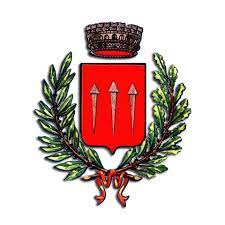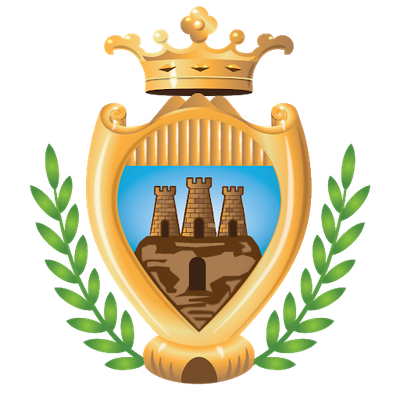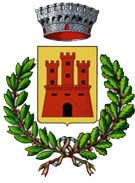THE 13 MUNICIPALITIES of the LAG

Acuto
According to the legend Acuto, a town in the province of Frosinone was founded around the fifth century by the inhabitants of the city of Anagni, after fleeing the invasion of the Vandals of Genserico. Before their arrival, the village appeared as a stronghold, which took the name of Castrum Acuti. The name of the town derives from the conical shape of the hill of the Ernici Mountains on which it stands. Acuto hosts two of the most important events in the province: "Electronic Music Festival" and "Saltaranta".
Read More
Alatri
Alatri Municipality in the province of Frosinone, is one of the main cities of Ciociaria and the third in the province by population after Frosinone and Cassino. It is the ancient Aletrium, one of the oldest centers of Lazio, which was one of the main cities of the Italic people of the Ernici and one of the so-called saturnian cities
Read More
Collepardo
The territory of the Municipality of Collepardo boasts unique natural beauties of their kind: the Caves or "Grotte Regina Margherita" following the visit of the first sovereign of Italy in 1904, are a concrete example. June 23 is the Night of the Witches, a great popular festival full of tales, legends, music and traditional dances to be experienced around a large bonfire.
Read More
Guarcino
Guarcino rises 625 meters above sea level, on a ridge of the Ernici Mountains. In its municipal territory there are two sources, Capo Cosa at 1,185 m., And Caporelle at 934 m, from which the Cosa river originates, a small tributary of the Sacco river. The territory is surrounded by the peaks of the Ernici Mountains, which reach and exceed 2000 meters above sea level and from which you can enjoy the panorama of the lower Lazio up to the Tyrrhenian Sea, including the Pontine Islands.
Read More
Filettino
Filettino is a municipality located on the south-western side of the Simbruini Mountains, in the high valley of the Aniene river at an altitude of 1075 m, on the border with Abruzzo and is part of the regional natural park of the Simbruini Mountains, which extends for 30,000 hectares. The origin of the name derives from the fact that the houses, due to the restricted territory, arise one in a row from here "row" Filetto, Filettino.
Read More
Fiuggi
The town is made up of two different inhabited centers surrounded by chestnut woods typical of the area: Fiuggi Città the oldest nucleus and the more modern Fiuggi Fonte inserted in the spa area. The medieval village, until 1911, was called Anticoli di Campagna. About the etymology of the name Anticoli, there are two versions: the first that the name derives from "Antiquae incolae" or ancient inhabitants of the place; the second from "Ante Colles" because the first houses most likely arose on the hill surrounded by others higher.
Read More
Fumone
The opinions of historians on the foundation of Fumone are different. Some want it to have been built in the year 244 of the foundation of Rome, at the time, that is, when the last King of Rome, Tarquinius the Superb, was dethroned and forced to leave the imperial city. It is said that Tarquinio, expelled from the Empire and surrounded by some henchmen, had the Rocca di Fumone built, fortified by 14 towers and bastions, of which the ancient remains are still preserved. "When I smoke fumat Tota Campania tremat"
Read More
Piglio
The town is at the center of a series of medieval villages built on the slopes of Mount Scalambra to look at the Sacco valley that extends below, where you can admire a panorama full of vineyards and olive groves. The village is divided into a series of narrow streets that lead to the highest point where the Castle, confined by the ancient access doors to the town, stands out above the houses. The territory is characterized by the olive and wine-growing tradition, with the production of the "Cesanese del Piglio" DOCG wine.
Read More
Serrone
The territory of Serrone was inhabited in pre-Roman times by the Ernici who, in defense of the sacred city of Anagni, established a fortified village in the locality of Lesca, evidence of this remains through two towers that are easy to access for visitors. The Roman settlement at the foot of Mount Scalambra, on which Serrone stands, was favored by the presence of important communication routes, civil and military, which connected the capital of the empire with Trevi in Lazio, Subiaco and Vallepietra. And so, starting from the sixth century, the first fortified inhabited center was built on the slopes of Monte Scalambra.
Read More
Torre Cajetani
Torre Cajetani, a pretty little town in Ciociaria, rises on the eastern end of a mountain ridge that detaches itself from the southern slope of the Ernici Mountains, presents an urban center with great historical charm, despite the damage suffered in the earthquake of 1915. Traces of the past take life through the symbol of the village, the Castle, a tangible sign of historical continuity, a living witness of the Middle Ages and the period of maximum splendor of this village, whose heart, with the winding alleys and the ancient churches that house valuable paintings, confirm the medieval atmosphere.
Read More
Trivigliano
Trivigliano, fief of Alatri, in the 13th century, belonged to Cardinal Gottifredo, then to the Caetani family at the behest of Bonifacio VIII °. Subsequently, it became a possession of the Colonna family who kept it until 1816. The historic center with a typically medieval configuration, with narrow alleys, arches and portals, is very suggestive. It is still possible to see the remains of the walls to which a single circular tower remains of a series that served as sighting posts belongs.
Read More
Trevi nel Lazio
Trevi deriva il suo nome dal termine "Treba" (Trivio) per la sua posizione fra tre importanti vie di comunicazione; la seconda parte del nome è stata aggiunta dopo l’unificazione nazionale. In epoca romana Treba Augusta, sorge al centro di un’ampia vallata dei monti Cantari, in cui scorre il fiume Aniene, oggi sbarrato da una diga che forma un lago artificiale. Il paese è composto da tre zone: l’antico abitato di Civita, una cinquecentesca detta “in mezzo alla terra”, una terza fuori le mura rinascimentali il territorio è valorizzato dall’area turistica degli Altipiani.
Read More
Vico nel Lazio
Vico nel Lazio, a typical example of a medieval village in southern Lazio, can be defined as the masterpiece of medieval military architecture. Compared to the "French city of Carcassonne" and the Ministry of Education it has been declared a "National Monument and area of significant public interest".
Read More

